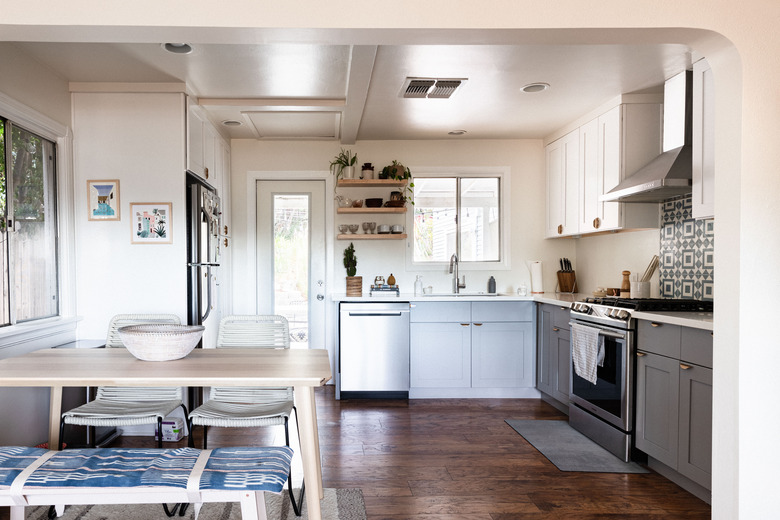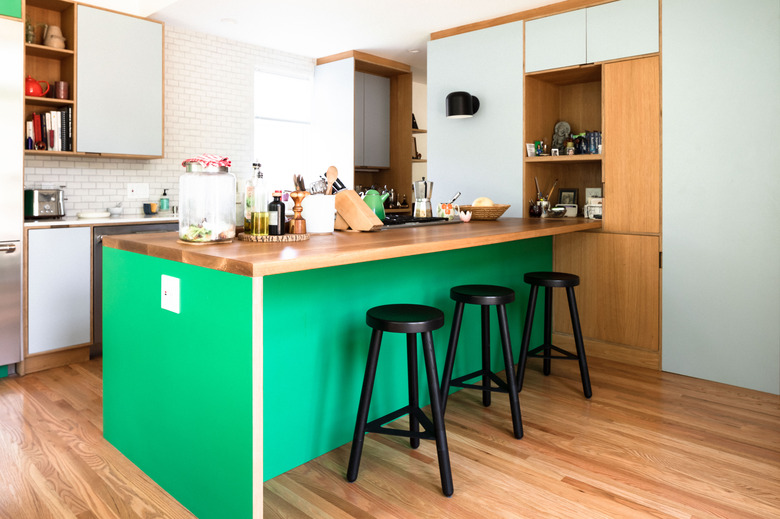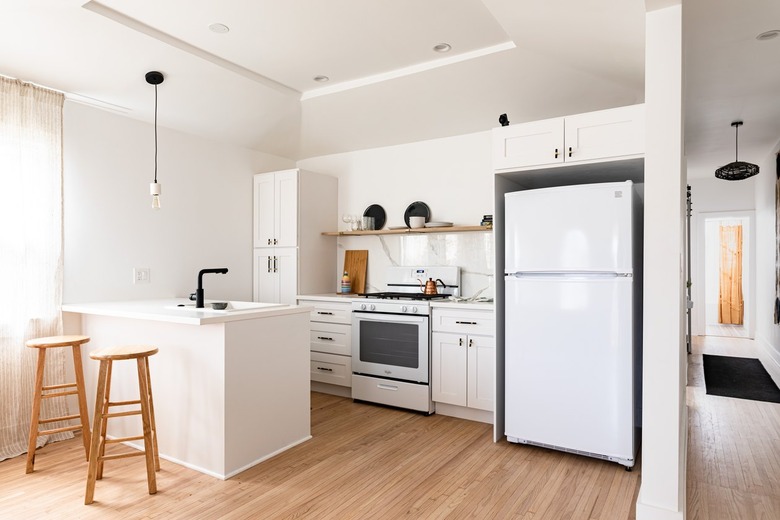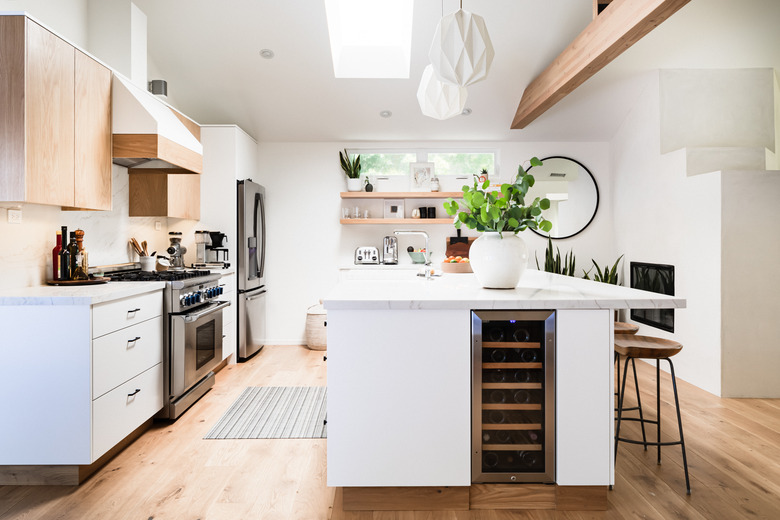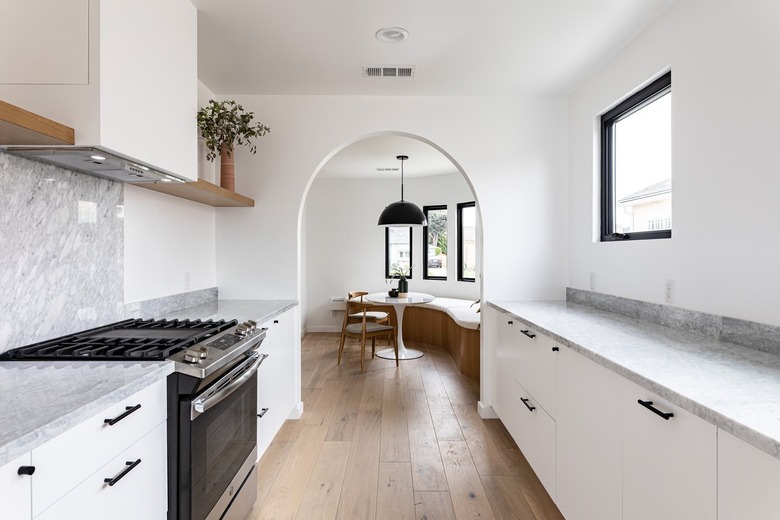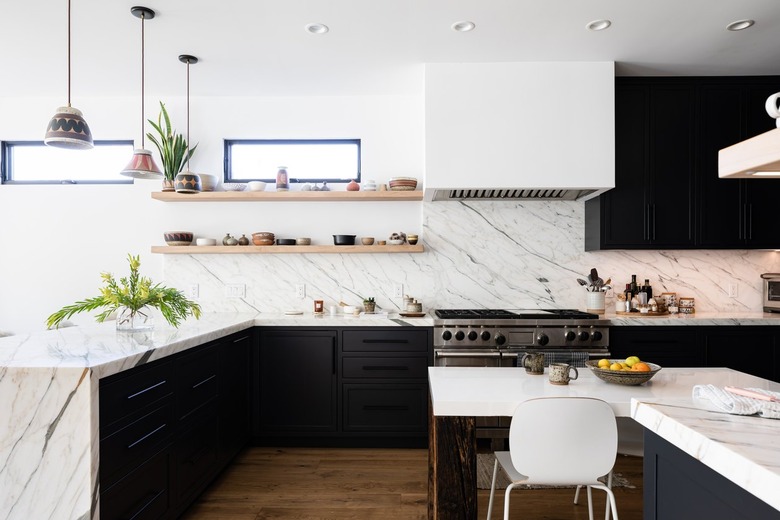Wood Floors In The Kitchen: What You Need To Know
Thanks to its timeless beauty and natural appeal, hardwood flooring has traditionally been a popular choice for homeowners who are looking to upgrade the look and feel of their homes. When it comes to kitchen flooring, however, opting for wood is a relatively new trend.
Deciding to upgrade your flooring is a big investment that can have a significant impact on your home's value and appearance, as well as your budget. If you are designing a new home or remodeling your current space, and you're wondering if hardwood flooring is the right choice for you, review the pros and cons of this increasingly popular choice before you make your decision.
Advantages of Wood Flooring in the Kitchen
Advantages of Wood Flooring in the Kitchen
In addition to its timeless beauty, hardwood flooring products come in a variety of colors and are generally durable. One of the benefits of opting for wood floors is the material's thick and solid construction. This allows them to be sanded down and refinished anytime they start to look shabby from too much wear and tear. This speaks not only to wood's durability but also to its versatility since you can refinish the floors anytime you want to change the style, too.
Wood flooring is also warmer and softer to walk on than tile flooring or other products. It can even offer visual warmth if you opt for a finish with yellow undertones. Wood floors are easy to clean and are an ideal choice for people with allergies because they do not attract dust or allergens the way carpet or other flooring materials do. Additionally, installing wood flooring in any room adds value to your home, which is an important consideration if you plan to put it on the market in the future.
Keep in mind that using different flooring options in adjacent rooms will create a choppy, start-and-stop feeling in your home. Installing wood flooring throughout, instead of separating the living and dining rooms with different products, creates a seamless wood look that supports an open concept kitchen design.
Disadvantages of Wood Flooring in the Kitchen
Disadvantages of Wood Flooring in the Kitchen
Due to the utilitarian nature of kitchens, the floors are prone to spillage. This higher likelihood of messy mishaps is one of the biggest disadvantages of installing wood flooring because water is its biggest enemy. If spills are not cleaned up quickly, they could stain the floor or seep into the planks and lead to warping, swelling, or other damage. Similarly, a leaky sink or dishwasher, if not attended to quickly, can cause serious water damage to wood flooring as well.
Since culinary spaces tend to get a lot of heavy foot traffic, kitchen floors must be able to withstand more wear and tear than the flooring in other rooms. While wood is a durable product, it is prone to scratches, dents, and other scuff marks. High heels, pet claws, and heavy furniture are constant threats to wood flooring, but with some caution and daily maintenance, they don't have to be deal-breakers.
Wood flooring is more costly than other options, which is an important consideration for the budget-conscious homeowner, and could be a disadvantage if your home improvement funds are limited. The average cost for both materials and installation of hardwood flooring ranges between $6 to $12 per square foot on the low end and $12 to $23 per square foot on the high end. The style (staggered, herringbone, parquet), finish, stain, and wood species you choose can also influence the final cost of your project.
You can also expect that kitchen wood flooring will need sanding and refinishing more often than it would if installed in an area with less foot traffic.
Types of Wood Flooring
Types of Wood Flooring
The two types of hardwood that are suitable for kitchen flooring include solid hardwood and engineered hardwood. A single piece of wood is used to create solid planks, which come in unfinished or prefinished form. Unfinished solid hardwood needs to be finished on-site after installation, whereas the prefinished variety, as the name suggests, comes ready-made. Typical installation involves fastening the material to a wooden subfloor using nails, staples, or sometimes glue.
Engineered hardwood uses a cross-grain construction process to bond together a top layer of thin veneer and several layers of utility hardwood. The crisscrossed layers of wood in engineered planks make it stronger and more resistant to changes in humidity than solid hardwood, which is an important consideration for kitchens where activities like turning on the oven or boiling water can affect humidity levels.
Engineered wood flooring generally only comes in prefinished form, and it's easier to install than solid wood because, in addition to using staples or glue to fasten it to the subfloor, it can also be installed as a floating floor. Since a floating floor is not attached to the subfloor, engineered hardwood offers more flexibility when it comes to the type of subfloor that can be used.
If you opt for unfinished hardwood planks, they will need to be sanded before they are stained in order to ensure that the floors are even and level. With this option, you also have more room for customization in terms of color. Plus, they can last relatively longer because you can sand and refinish them year after year.
For those looking for a more eco-friendly flooring option, consider reclaimed planks (or repurposed hardwood), which utilizes salvaged wood. Since the material is repurposed from factories or even other homes, chances are, you'll be able to save per square foot as well.
Installation Tips for Wood Flooring in the Kitchen
Installation Tips for Wood Flooring in the Kitchen
If you are planning to do a complete kitchen remodel, install the wood flooring before installing the base cabinets. To save money on material that won't be seen, and make the flooring more accessible for future repairs, if necessary, mark the location of your cabinets and lay the flooring facing the same direction as your base cabinets. Use plywood with the same thickness as your wood flooring in the area under the cabinets, and install your wood flooring right up to the edge of the cabinets.
While it might be tempting to save money on material and labor by installing up to and around appliances rather than underneath them, keep in mind that your wood flooring will last longer than even the hardiest appliance. Your best bet is to install the wood flooring underneath all movable appliances, including the dishwasher.
Cleaning and Maintenance Tips for Wood Flooring
Cleaning and Maintenance Tips for Wood Flooring
When you invest in real wood flooring, there are a number of steps worth taking to preserve the integrity of the material. Here, we break it down:
Don't wait on spills and messes
It's important to commit to keeping your floors clean and dry. Immediately wipe up any spills to avoid water damage.
Clean proactively
Frequently sweep away dirt and debris using a broom with soft rubber bristles or a soft cotton dust mop. Vacuum the wood floors on a weekly basis to prevent buildup.
Avoid the hard stuff
Steer clear of using harsh chemicals, overly wet mops, and steam cleaners since these can damage the finish on your floors.
Keep it padded
Protect vulnerable areas of your flooring by placing rugs or floor mats in high-traffic areas and places that are more prone to spillage. Use soft pads on the feet of heavy furniture or appliances to avoid scratches and dents.
Seal the finish
Use a polyurethane varnish and a good oil-based sealant to increase your kitchen floor's resistance to traffic and spills.
Even the tidiest kitchen will eventually fall prey to wear and tear — scratches and water damage are almost inevitable, as is damage from trapped moisture. When this occurs (and this could take years), you will likely have to sand and refinish the flooring. If your floors are finished in hardwax oil, you can sand out dents and scratches and recoat them in the same oil. Hardwood floors will also dull in color over time and will need a fresh coat of wood stain. According to Thumbtack, it'll cost roughly $1,500 on average, to refinish hardwood floors — though that number can vary depending on size and square footage.
With the proper care and maintenance, wood flooring in your kitchen can be a worthwhile investment that can provide decades of enjoyment.
